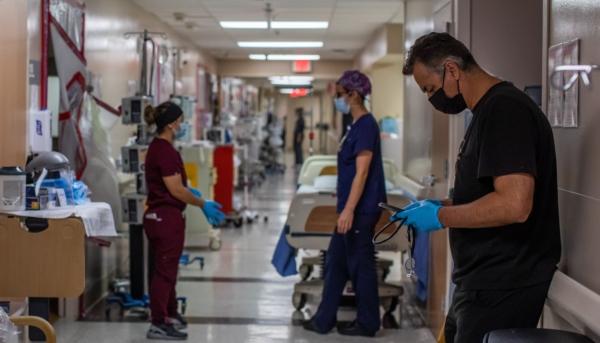With the state facing a nursing shortage—and following two days of contentious, passionate discussion from board members, stakeholders, and dozens of public commenters—California’s Board of Registered Nurses decided Nov. 16 to limit the number of nursing students allowed to enroll at Irvine-based West Coast University.
The school was previously allowed to enroll 1,500 students annually, split evenly at campuses in Orange County, Los Angeles, and Ontario, California—though numbers swelled to approximately 3,300 by 2023.
This triggered the state board to intervene—as all enrollment increases must be approved—with members ultimately voting that the school’s campuses will have until November 2024 to come into compliance, with enrollment limited to no more than 960 students each per year, totaling 2,880 university-wide.
The Los Angeles campus, however, will have to delay implementation until the rate of students passing the state exam exceeds 75 percent.
Based on the school’s current tuition of approximately $150,000 for its nursing program, the enrollment reduction will reduce the university’s annual revenue by approximately $16 million.
“Jobs of faculty and staff ... are now on the line,” Chiarina Piazza, dean of West Coast University, told board members during the meeting before the vote. “Please consider the impact your decision will have on numerous lives, the impact on our nursing students ... on hundreds of faculty members ... and hospitals and communities that we serve.”
She reiterated the school’s capacity to meet the state’s performance requirements—even with higher enrollment—including adequacy of resources, clinical placement availability, no verified complaints, and adequate licensing exam pass rates.
While considering a belated request from the school to receive approval for current enrollment levels, the board, however, was opposed—citing the university’s high tuition compared to other colleges and decreasing nursing student exam passing rates coming out of its programs.
“To request 3,300 students at a program that costs over $150,000 ... is something I just can’t support,” Mary Fagan, vice president of the state nursing board, said during the meeting. “People chose West Coast because they couldn’t get in another, more affordable program.”
By spreading enrollment over community colleges, she suggested more students could take advantage of cheaper tuition options than those provided by private universities like West Coast.
University spokespersons responded forcefully to the comments, noting the likelihood of a lawsuit in response to the board’s actions.
“Rolling back our enrollments by 30 percent without any reasonable basis to do so is likely going to result in litigation,” Scott Casanover, general counsel and senior vice president of governmental affairs for West Coast University, argued during the board meeting. “Nothing in [current law] allows for such a draconian rollback.”
He took exception to implications that the school was impacting enrollment at other university’s programs and demanded evidence of such, saying the board should rely on facts instead of speculation.
“You can’t just say West Coast is causing displacement,” Mr. Casanover said. “You have to show that displacement.”
While debating the matter at board meetings throughout the year, supporters of the university pleaded with state officials to allow the school to expand its program, and letters of recommendation poured in from hospital administrators and state representatives, including Rep. Ken Calvert (R-Calif.), state Sen. Brian W. Jones (R-San Diego), and Assemblywoman Marie Waldron (R-San Diego).

Despite a nursing shortage in California of approximately 36,000, according to the University of San Francisco, state board statistics show that more than 74 percent of applicants seeking to enroll in nursing schools across the state were denied due to lack of space and other reasons, according to the last biennial survey conducted by the state’s nursing board covering 2021 to 2022.
Further complicating matters are lottery systems utilized in some areas to determine enrollment selection, which critics say limits options for the highest qualified applicants and impacts the quality of care offered to patients by allowing luck to select future nurses rather than academic ranking.
Enrollment across the state has increased slightly in recent years, though actual seats filled with students dropped to 81.5 percent after trending in the high 90s for years, according to state nursing board statistics.
The Golden State is not alone in dealing with nursing shortage, as the issue exists nationwide, with nearly 90 percent of nurses saying the problem has worsened over the last five years, a 37-point jump from 2019, according to the 2023 annual survey of registered nurses conducted by AMN Healthcare.
The state’s nursing board did not respond to requests for comment on deadline.





